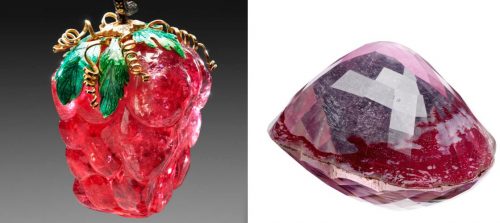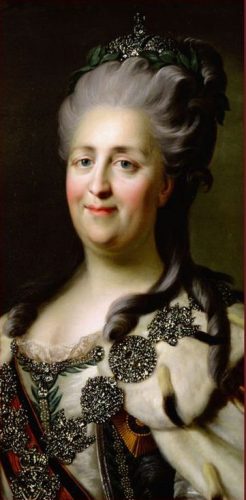For October’s birthstone, I present the astonishing 255.75ct Caesar’s ruby. And yes, it’s not a ruby but a rubellite tourmaline, and it flummoxed European royal courts as it changed hands through various high-profile deaths, marriages and spoils of war.

The oldest known documentation of the gem is the late 16th century in the possession of King Charles IX of France, which following his death, headed to Bohemia with his widow, Elisabeth of Austria. In 1609, the Flemish heavyweight of modern mineralogy and all-round renaissance guy, Anselmus Boëtius de Boodtdescribed Emperor Rudolf II (brother of Elisabeth) described the unique red gem as a real ruby, referring to the gem as ‘Caesaris rubinus’ (the ‘Emperor’s ruby’), and the name stuck.
In 1648, at the tail end of the Thirty Years War, during the battle of Prague, the Swedish Army captured and looted Prague Castle, and the prized red gem was given to Princess Christina, ensuring a looting General was awarded a noble title when the Princess made Queen of Sweden in 1650. Four years later Christina abdicated, converts religion and pawns her jewellery in Amsterdam. Following her death, the King of Sweden successfully reclaims Christina’s pawned bling, and it returns to Stockholm and the Crown Jewels.
During 1748, the looming possibility of an expensive war with Russia and Denmark, Sweden considers pawning (again) what is considered one of Europe’s largest ruby. The risk of war faded and the Swedish King Gustav III’s cousin was, as luck would have it, Catherine II of Russia, so when she ascended the throne her Swedish royal cousin headed to St Petersburg to improve relations. Out on a stroll with a magnificently dressed Catherine, Gustav expressed delight at her walking stick which was bejewelled with a large diamond solitaire and a braid of pearls finished with tassels set with (no less) than 450 diamonds. Catherine said it was his to keep, which whipped Gustav into a panic. How was he going to have to reciprocate the generous gift? He remembers the large red ruby but doesn’t have authority to pass out crown jewels willy-nilly so he enlists his brother and a trusted courier and without official permission they secretly take the gem post-haste to St Petersburg where it is presenting it to an impressed Catherine and it immediately enters the Russian Crown Jewels where it resides today.

1922: an inventory of the Russian Crown Jewels correctly identified the gem as tourmaline and not ruby, which caused disbelief in Sweden who questioned whether it was the same stone!? The Swedes had made a model of the uncut gem when they were considering its value to finance a war. The model and the stone were compared proving it to be the same stone, which matched the specific gravity of a tourmaline and not a ruby, thus ending centuries of confusion.
It is unclear when and by whom cut the delightful raspberry like shape with the littlegold tendrils or how it arrived in France from its possible origins in Myanmar?
Main image: a lead model of Caesar’s Ruby made in 1748; a model of the gem in red wax; a model in glass crafted by Johan Feychting in 1748.
Photocredit for all images: Ola Myrin, Livrustkammaren SHM (CC BY)